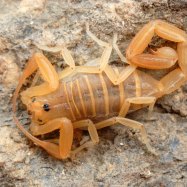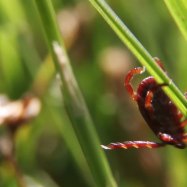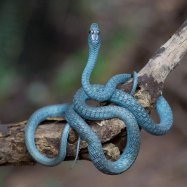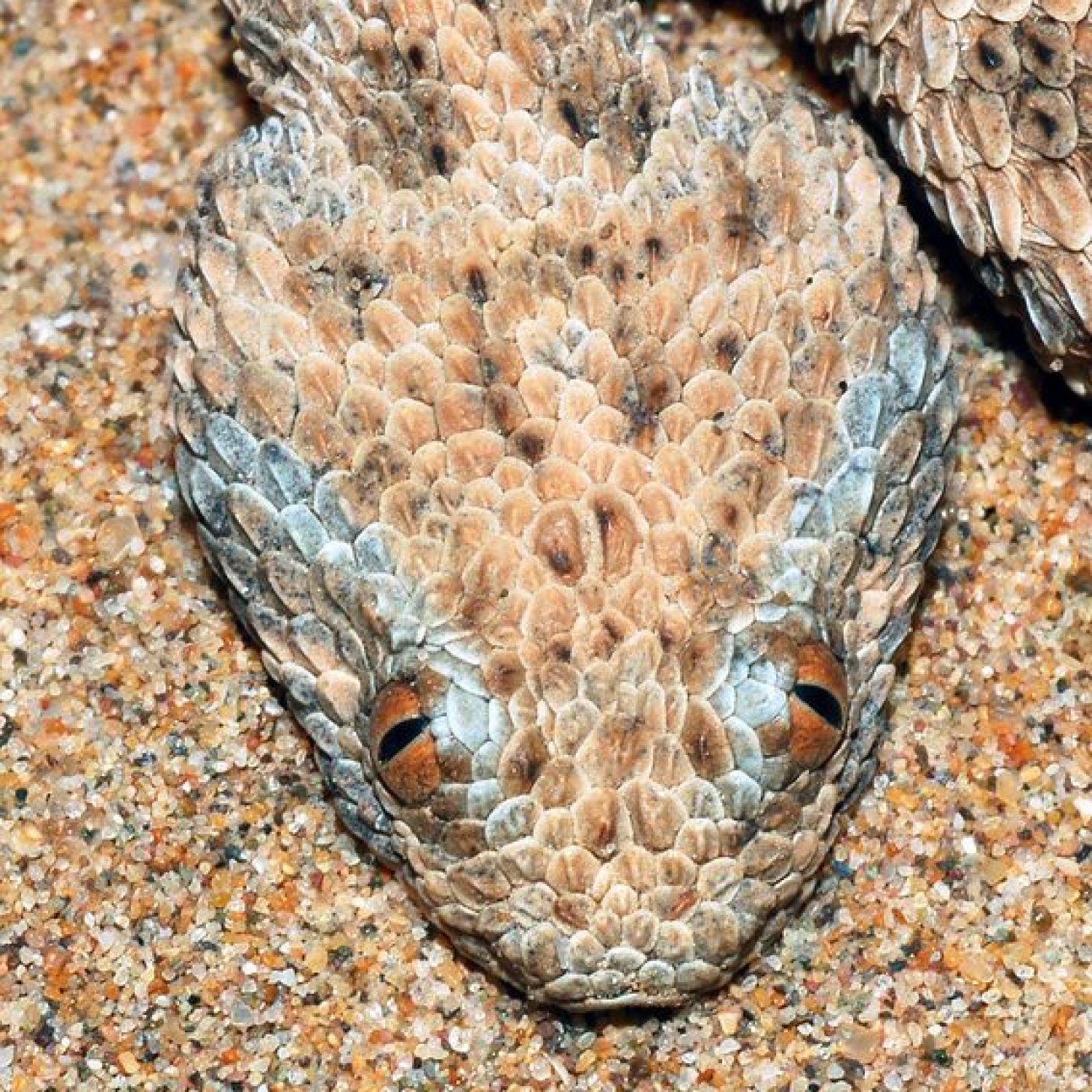
Sand Viper
Typically around 50 cm (20 inches)
The Sand Viper, with a body length of around 50 cm, is a short and stout viper found in sand dunes and rocky desert areas. Belonging to the Viperidae family, these venomous snakes should be avoided during hikes and walks in their natural habitat. Be cautious and stay safe! #SandViper #Viperidae #DesertWildlife
Animal Details Summary:
Common Name: Sand Viper
Kingdom: Animalia
Habitat: Deserts and arid regions
The Deadly and Elusive Sand Viper: Mysterious Creature of the Desert
The vast expanse of sand and rocky terrain in the deserts and arid regions may seem like a barren land devoid of life. However, hidden among the sands and rocks lies a creature that is not only elusive but also deadly. Its scientific name is Cerastes vipera, but it is more commonly known as the Sand Viper. It belongs to the kingdom of Animalia and the phylum of Chordata, making it a part of the vast family of reptiles Sand Viper. Among the reptile class, it falls under the order Squamata, and in the family of Viperidae, alongside other venomous snakes like rattlesnakes and copperheads.The Sand Viper is a master of camouflage and a hunter in the harsh desert environment. Its habitat spans across the Northern Africa and Middle East regions, with its country of origin being Egypt. They can be found in sand dunes and rocky desert areas, making it challenging to spot them. Their body coloration ranges from yellowish-brown to reddish-brown, providing them with the perfect camouflage to blend in with their surroundings. Their body shape is short and stout, making them well-adapted to burrowing in the sand and rocks. On average, they measure around 50 cm (20 inches) long, making them relatively small compared to other reptiles.
An Efficient Carnivore
Being a carnivore means that the Sand Viper mainly feeds on other animals as a source of nutrition. The combination of their venomous bite and excellent hunting skills makes them efficient predators Springador. However, their diet is not limited to just one type of prey. These vipers are known to have a varied diet, which includes rodents, insects, lizards, and even smaller snakes. Their hunting method is quite sneaky; they use their body's camouflage to remain hidden while waiting for their prey to come within striking distance. Once close enough, they strike with lightning speed, injecting their prey with their venom. The venom is potent, causing rapid paralysis and eventual death of their prey. The Sand Viper's ability to hunt and kill a variety of animals makes them highly adaptable to their environment.The Mystery Behind the Sand Viper
The Sand Viper is known for its secretive and elusive nature, making it a fascinating creature among both scientists and enthusiasts. Despite being studied for many years, there are still many unknowns surrounding this species. Their tendency to hide and avoid human encounters has made it challenging to gather accurate data and information about them. One of the most intriguing and mysterious aspects of the Sand Viper is its unique adaptation to the desert environment. They have specialized organs in their head called "heat sensing pits," which allows them to pinpoint warm-blooded prey, making them efficient hunters even in total darkness.Another mystery surrounding the Sand Viper is its venom. The venom of the Sand Viper is potent, making it one of the most lethal snakes in the world. However, there is still much to be learned about the composition of its venom and its effects on different animals. Despite their potentially deadly bite, they are not aggressive creatures. They usually only strike in self-defense when threatened or disturbed. Because of this, many people believe that the Sand Viper has a bad reputation and is often misunderstood.
Danger to Humans
As mentioned earlier, the Sand Viper only strikes when threatened, making them relatively safe to be around if left alone. However, accidents can happen when people unintentionally come in contact with these elusive creatures. Unfortunately, there have been cases of human fatalities from Sand Viper bites. Most of these incidents happen when people accidentally step on them while walking barefoot in the desert. The Sand Viper's bitten victim will experience symptoms such as intense pain, swelling, and tissue damage around the bite area. Without proper and immediate medical treatment, the bite can result in respiratory failure and death.Conservation Efforts
The Sand Viper, like many reptile species, is facing threats to its survival. The frequent expansion of human settlements and infrastructure into their natural habitat has resulted in loss and fragmentation of their habitat. Uncontrolled hunting and collection of Sand Vipers for the exotic pet trade have also significantly impacted their population. As a result, the Sand Viper is listed as an endangered species by the International Union for Conservation of Nature (IUCN). To protect these elusive creatures, conservation efforts have been put in place. Some governments have also implemented laws and regulations banning the hunting and trade of Sand Vipers.Adapting to a Changing Climate
The desert climate is known for being harsh and extreme, with hot and dry conditions. The Sand Viper has evolved and adapted to thrive in such an environment. However, with the changing climate and global warming, desert regions are also experiencing changes. As temperatures rise, the sandy deserts become hotter, leading to a loss of vegetation and destruction of natural habitats. This poses a significant threat to the Sand Viper's survival as it depends on the desert's conditions to survive. Increased heat and drought can result in a decrease in their prey populations, making it harder for them to find food.Conclusion
The Sand Viper is undoubtedly a fascinating and mysterious creature, with many hidden secrets waiting to be discovered. Its unique adaptations to the harsh desert environment and efficient hunting abilities make it a vital player in its ecosystem. However, with the changing climate and threats to its survival, it is crucial to take measures to protect this elusive species. Increased conservation efforts, education, and raising awareness about these creatures can go a long way in ensuring their survival for future generations to appreciate and admire. So, let us all do our part in preserving the home of the Sand Viper and other desert creatures for a healthier and more vibrant planet.

Sand Viper
Animal Details Sand Viper - Scientific Name: Cerastes vipera
- Category: Animals S
- Scientific Name: Cerastes vipera
- Common Name: Sand Viper
- Kingdom: Animalia
- Phylum: Chordata
- Class: Reptilia
- Order: Squamata
- Family: Viperidae
- Habitat: Deserts and arid regions
- Feeding Method: Carnivorous
- Geographical Distribution: Northern Africa and the Middle East
- Country of Origin: Egypt
- Location: Sand dunes and rocky desert areas
- Animal Coloration: Variable colors ranging from yellowish-brown to reddish-brown
- Body Shape: Short and stout
- Length: Typically around 50 cm (20 inches)
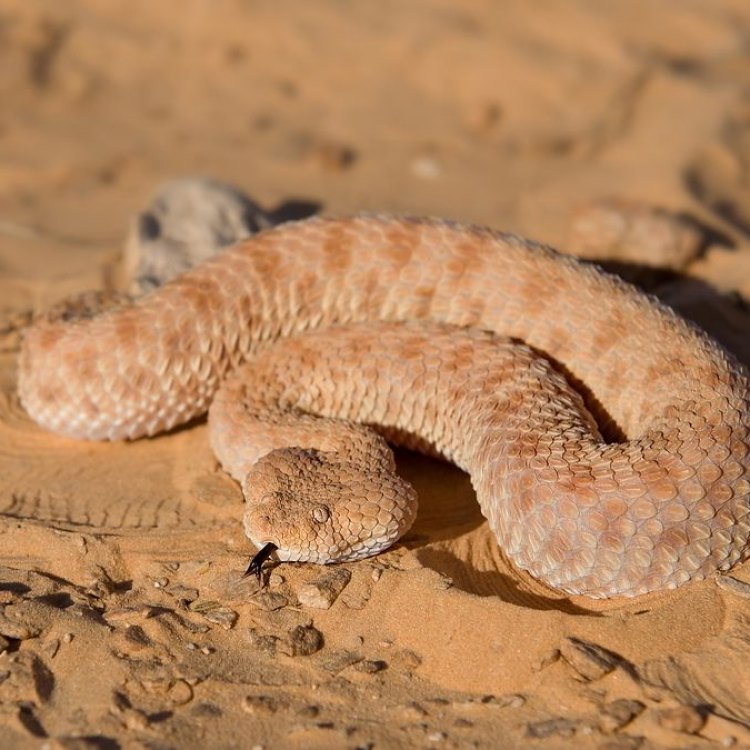
Sand Viper
- Adult Size: Around 50 cm (20 inches)
- Average Lifespan: Around 10-15 years
- Reproduction: Oviparous (egg-laying)
- Reproductive Behavior: Mating occurs in the spring
- Sound or Call: Hissing sound
- Migration Pattern: Non-migratory
- Social Groups: Solitary
- Behavior: Nocturnal and ambush predator
- Threats: Habitat loss and degradation
- Conservation Status: Least Concern
- Impact on Ecosystem: Help control rodent populations
- Human Use: None known
- Distinctive Features: Horn-like scales above the eyes and a shovel-like rostral scale
- Interesting Facts: 1. Can bury itself completely under the sand 2. Sidewinding movement helps it move efficiently on loose sand 3. Has heat-sensing pits on the head to detect prey 4. Venomous snake with powerful venom
- Predator: Birds of prey, mongooses, and other carnivorous mammals
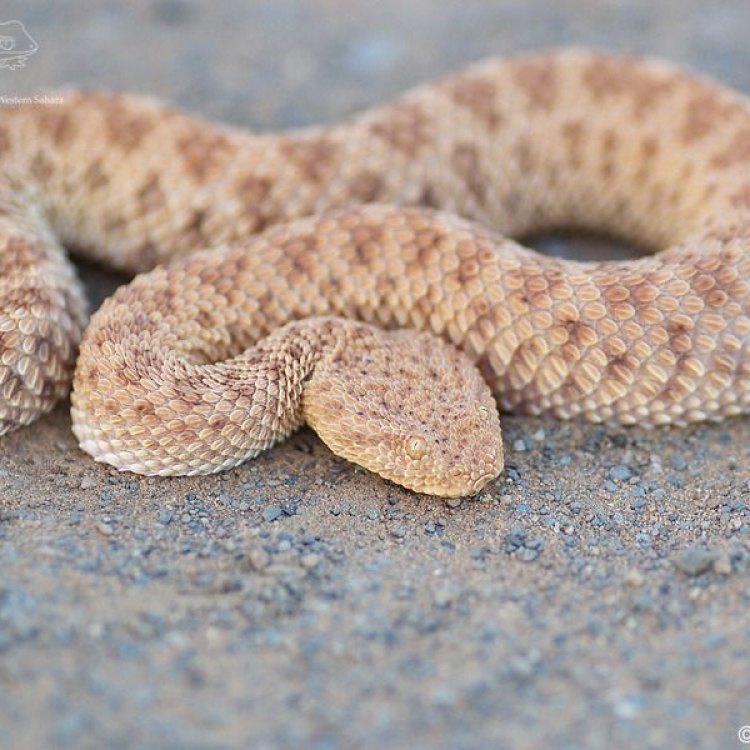
Cerastes vipera
Uncovering the Secrets of the Elusive Sand Viper: A Master of Survival
The desert is a harsh and unforgiving environment, with scorching hot temperatures, scarce resources, and constant danger. Yet, somehow, the Sand Viper manages to thrive in these extreme conditions. With its unique adaptations and impressive survival skills, this elusive snake has captivated the attention of researchers and snake enthusiasts alike.The Sand Viper, also known as the Cerastes vipera, is a venomous pit viper species that is native to the deserts of North Africa and the Middle East PeaceOfAnimals.Com. This snake has a distinctive appearance, with its horn-like scales above the eyes and a shovel-like rostral scale, giving it a menacing and formidable look.
These serpents can grow to an average length of 50 cm (20 inches) as adults, making them one of the smaller viper species. However, do not let their size deceive you, as their venom is potent and can cause severe effects on their prey and potential predators alike. This species has a reputation for being one of the deadliest snakes in its habitat.
The average lifespan of the Sand Viper is around 10-15 years, which is relatively long for a snake. This longevity can be attributed to their adaptability and efficient hunting techniques, making them skilled survivors in the harsh desert environment.
Reproduction in Sand Vipers happens through oviparity, which means that they lay eggs instead of giving birth to live offspring. Mating occurs in the spring, and after a gestation period of 60-70 days, the female lays anywhere from 4-10 eggs in a secluded location, such as a burrow or a rock crevice. The female takes no part in the care of the eggs, and once they hatch after about 6-8 weeks, the young vipers are entirely independent Sea Trout.
One of the most interesting reproductive behaviors of the Sand Viper is their use of scent marking to attract potential mates. Females produce a pheromone to let males know that they are ready to mate, and this scent can linger in the area for a long time. Males, in turn, use their specialized tongues to pick up on this scent and locate the female, making their mating rituals a vital part of their survival.
The Sand Viper is known for its nocturnal nature, only leaving their burrows or hiding places after the sun has set. This behavior helps them avoid the scorching heat of the day and utilize the coolness of the night to hunt for prey. These snakes are also solitary, preferring to hunt alone and only coming into contact with others during the mating season.
As ambush predators, Sand Vipers have a unique hunting style. They patiently wait for their prey, mainly rodents and lizards, to pass by and then strike quickly with their venomous fangs. This strategy requires them to have excellent camouflage and patience, allowing them to blend into their sandy surroundings and surprise their unsuspecting victims.
One of the most distinctive and critical features of the Sand Viper is its ability to bury itself completely under the sand. This adaptation allows them to avoid the intense heat and remain unseen while waiting for their prey. With their shovel-like rostral scale, Sand Vipers quickly dig tunnels in the sand, disappearing from view and making them incredibly challenging to spot for potential predators or prey.
Along with their ability to camouflage and burrow, Sand Vipers have a unique way of moving in the desert. Instead of the typical slithering movement, they have adapted a sidewinding motion, where they move their body sideways in a series of S-shaped curves. This sidewinding movement helps them navigate efficiently through loose sand, making them incredibly agile and efficient hunters.
Another remarkable adaptation of the Sand Viper is the presence of heat-sensing pits on their head. These pits, also known as the loreal pits, allow them to detect radiation in the infrared spectrum, helping them locate their prey even in the dark. This feature is crucial in their nocturnal hunting habits, giving them an advantage over their prey, which cannot see in infrared.
The Sand Viper is a venomous snake, with potent venom that can immobilize their prey quickly. The venom is also powerful enough to cause severe health complications in humans if bitten. However, their venom is also essential for the ecosystem, as it helps control rodent populations, which can otherwise cause damage to crops and spread diseases.
Despite their essential role in the ecosystem, Sand Vipers are facing significant threats. Habitat loss and degradation, primarily due to human activities and urbanization, are the most significant dangers to their survival. As a result, their population numbers have been declining in recent years, making their conservation status "least concern" according to the IUCN Red List. It is vital to protect the habitats of these vipers and increase awareness of their importance in the desert ecosystem.
Interestingly, despite their venomous nature, there is no record of human use for the Sand Viper. They are rarely kept in captivity, primarily due to their specialized needs and potentially deadly venom. These snakes are not domesticated, and there is no known use for their venom or skin, making them a truly wild and elusive species.
The Sand Viper also faces threats from predators in their ecosystem. Birds of prey, mongooses, and other carnivorous mammals are among their natural predators, making survival in the desert even more challenging. Their excellent camouflage and burrowing adaptations help them avoid these predators, but they must remain constantly vigilant to survive.
In conclusion, the Sand Viper is a fascinating and unique snake, perfectly adapted to survive in the harshest environments. From their horn-like scales to their sidewinding movements, these snakes have several distinctive features that make them efficient hunters and formidable survivors in the desert. As their habitats continue to face threats, it is essential to appreciate the role these vipers play in the ecosystem and work towards their conservation. The Sand Viper may be elusive, but through understanding and conservation efforts, we can uncover their secrets and ensure their survival for generations to come.
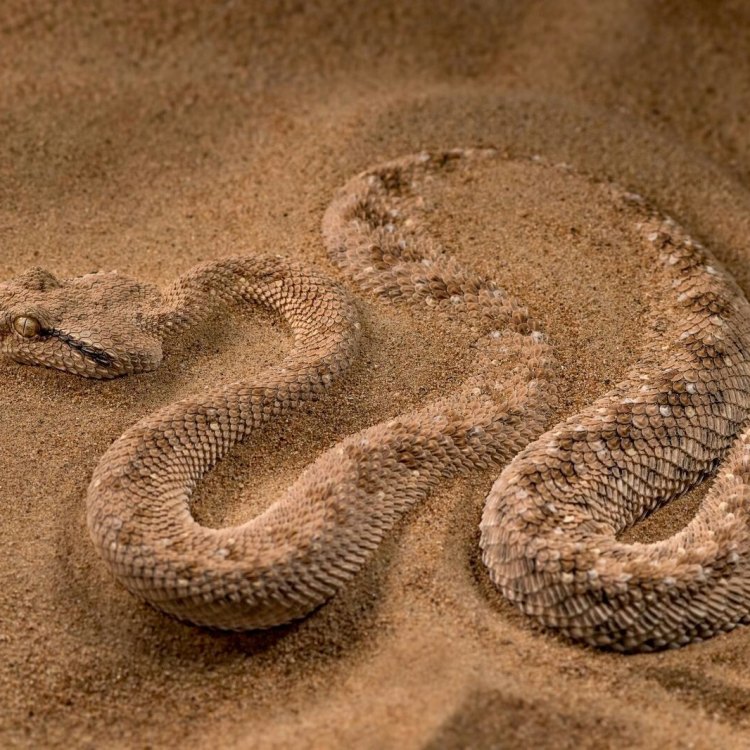
The Deadly and Elusive Sand Viper: Mysterious Creature of the Desert
Disclaimer: The content provided is for informational purposes only. We cannot guarantee the accuracy of the information on this page 100%. All information provided here may change without prior notice.


